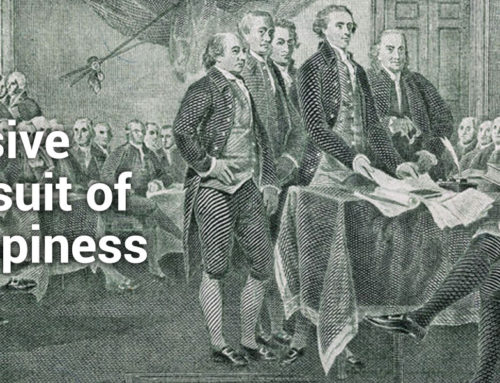
The majority of leadership advice these days is to learn to be a servant leader and I agree wholeheartedly. But let’s not lose sight of the fact that while important, it only represents one dimension of leadership. The other two critical leadership dimensions are strategic leadership and performance leadership. My definition of leadership is a simple one but, in many ways, quite profound and universal.
Leadership is the ability to transform ideas into significant results.
That’s it! Anytime you can conceive of a new idea and turn it into a significant result you have exhibited leadership and changed the status quo, be it personal or professional, singularly or with a team or organization. In order to be considered a leader, you need to conceive of a new idea and make it happen.
Strategic Leadership – The first leadership dimension is all about generating an idea, a vision or a goal if you will that will create a future different than the present, and then developing a compelling strategy around that vision. Strategic leaders lead from the front by changing the status quo, creating a new vision for the future and communicating it in a compelling way. This is the traditional view of “leading”. It requires imagination to look at what everyone looks at and see what no one else sees. It also requires courage to act on one’s ideas despite the naysayers. And finally, it requires persuasiveness to communicate a compelling strategy that inspires confidence among your team and convinces them to follow your dream.
Performance Leadership – The second leadership dimension is all about managing the present by converting the strategy into focused execution. In other words, turning ideas into results; intentions into actions. Performance leaders lead from the middle by translating the vision into concrete objectives that focus on the critical success factors necessary to achieve the desired results and then managing to achieve those objectives. This is the traditional view of “managing”. It requires conscientiousness; the motivation and discipline to be thorough and dependable. Conscientious managers plan ahead, delegate responsibly, pay attention to detail, and follow up in a disciplined way to ensure that the objectives are proceeding according to plan.
It also requires a high degree of productivity; the ability to manage one’s energy and focus. Staying focused is a critical success factor and requires the ability to process and prioritize lots of information. And finally, it requires discernment; the ability to consistently make good decisions based on cognitive and intuitive judgement. Despite the best-laid plans, invariably things never seem to go according to plan. To successfully execute a plan, a critical success factor is to make a high percentage of good decisions. It is the collective decisions made each day that determine the success of your strategy.
Servant Leadership – The third leadership dimension is all about leadership development, learning from past actions, growing, developing and adjusting along the way. Servant leaders lead from the rear to support the staff responsible for meeting the strategic performance objectives and empowering them, guiding them and helping them grow as leaders. This is the traditional view of “coaching”. It requires integrity; behavior that is genuine in words and actions. Integrity is the foundation upon which all trust is based. We may respect and admire strategic leaders and performance leaders but will only trust those leaders who are honest in what they say and consistent in how they act. “Walking the talk” cannot be just a slogan but must be way of life to be a servant leader.
It also requires empathy; the willingness to walk a mile in another’s shoes. Servant leaders listen, think, converse, and act empathetically the majority of the time. When listening to others, they focus both intellectually on what the person is saying, but also emotionally about what the person is feeling (i.e. listening from the heart as well as the head). When formulating plans, they factor in not only the potential outcomes but also the feelings and aspirations of others. When conversing with others, they hold their positions gently and try to understand the others’ point of view. Finally, their actions demonstrate genuine care for others. And finally, it requires teaching skills; the ability to foster self-learning in others. Servant leaders are great teachers, not in the grade school sense of imparting knowledge but in the professional sense of investing the time to truly understand the talent, motivation and aspirations of highly skilled individuals and providing peer-to-peer feedback. Their goal is to increase their level of awareness and guide them in the process of self-discovery.
To summarize: Strategic leaders disrupt the status quo and initiate positive change by creating and communicating a new vision of the future and a strategy on how to achieve it. This is the traditional view of a leader. Strategic leaders generate ideas that change things.
Performance leaders translate strategy into execution and turn ideas into results. This is the traditional view of a manager. Performance leaders get things done.
Servant leaders help people responsible for execution to learn and grow. This is the traditional view of a coach. Servant leaders help people grow.
While you can be good at all three leadership dimensions if you work at it. A good piece of advice is to surround yourself with leaders with complimentary skills so that you can develop a three-dimensional leadership team.
For a more in-depth discussion of this topic, read Leading Science and Technology Organizations: Mastering the fundamentals of Personal, Managerial, and Executive Leadership.


